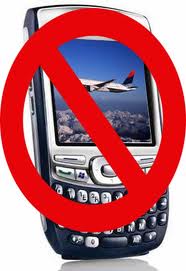 Transportation Secretary Ray LaHood has vowed to conduct a vigorous campaign against all sources of distracted driving, with particular emphasis on cell phones and texting. In a suggestion that even safety pundits have characterized as somewhat outrageous, LaHood has said he would like to see all cell phone use in automobiles banned.
Transportation Secretary Ray LaHood has vowed to conduct a vigorous campaign against all sources of distracted driving, with particular emphasis on cell phones and texting. In a suggestion that even safety pundits have characterized as somewhat outrageous, LaHood has said he would like to see all cell phone use in automobiles banned.
Even though study after study has revealed that accidents actually increase when texting bans are put in place (people text anyway, but try to hide the behavior), 30 states and the District of Columbia have these laws on the books, with more sure to follow. Although LaHood does not support hands free technology, such systems are regarded by the insurance industry as safety devices. Their presence can be the source of a premium discount and it is possible to add many types of aftermarket hands free devices to older cars.
Of course, the most obvious way to go hands free behind the wheel is to simply wear a Bluetooth headset. Like any behavior-based security measure, however, it will be hard to prove to your insurance company that you always wear the headset behind the wheel. A hard-wired unit or other dashboard-based device will likely be a better bargaining chip to argue for a rate discount. There are many choices on the market, with the more sophisticated units opening for around $300.
For example, the Parrot MKi9200 has active noise cancelation and voice recognition, with such features as caller ID complete with photo and the ability to browse music tracks. Although the unit will work with many smartphones, it boasts plug-and-play compatibility with the iPhone. The unit retails for $299.99, which does not include the cost of installation.
The Parrot illustrates the primary consideration in adding an aftermarket Bluetooth system. What kind of smartphone do you have and which aftermarket hands free system will work best with it? It is not out of line to consider upgrading to a better phone before adding the system to your car, thus extending the working lifetime of both.
If you upgrade your phone with a two-year contract and add a hands free auto system, mentally run the total cost out over 24 months and you’ll see the investment is minimum on a monthly basis. This is especially true when weighed against potential tickets in states where bans exist and when compared against potential savings on insurance costs. Like anything else, it’s a game of numbers, but with the increasing backlash against distracted driving, these numbers should run in your favor.





